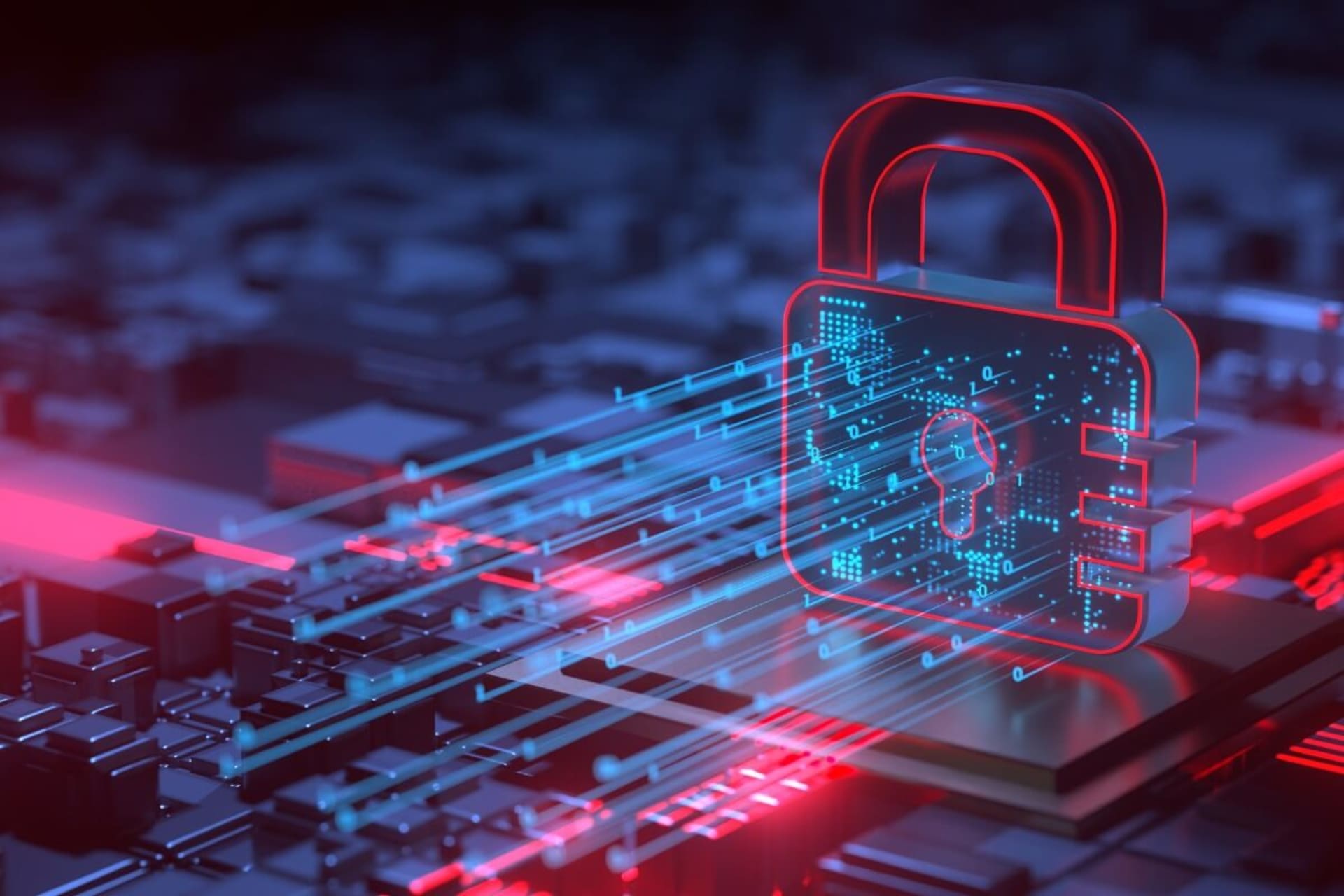Cybersecurity is an important topic for businesses of all sizes. It’s a way to protect your business from cyber threats, such as hackers and viruses, that can cause serious damage to your data or systems. Cybersecurity involves using technology, processes, and procedures designed to protect networks, computers, programs, and data from attacks by malicious actors.
At its core, cybersecurity is about protecting information assets — both digital (such as emails) and physical (like paper documents). This includes preventing unauthorized access or modification of these assets, detecting any intrusion attempts, responding quickly if there are breaches, recovering lost or damaged files, ensuring compliance with applicable laws and regulations related to security measures within the organization, and other important steps.
Cybersecurity is essential for companies today because it helps them stay safe online while maintaining their reputation among customers who trust they will keep their personal information secure. In addition, strong cybersecurity practices can reduce costs associated with potential losses due to cyberattacks like ransomware attacks, which could cost millions depending on how much data was stolen or destroyed during the attack.
The Most Common Methods of Attack
While there are hundreds of exploits and cyberattacks, some of the most common approaches include:
- Malware: malicious software designed to damage or disable computers and computer systems, such as viruses, worms, Trojans, ransomware, spyware, adware, and rootkits
- Phishing: fraudulent emails or websites that appear legitimate but are used to steal personal information such as passwords and credit card numbers
- Social engineering: the use of deception to manipulate individuals into revealing confidential information or performing actions they wouldn’t normally do
- Denial-of-service (DoS) attack: an attack on a network or system that floods it with requests for service until it can no longer respond to legitimate traffic
- SQL injection attack: malicious code is inserted into a vulnerable web application to gain access to sensitive data stored in a database
- Man-in-the-middle (MitM) attack: an attacker intercepts communications between two parties without either party knowing about it
- Password cracking: attempting to guess passwords using various methods such as dictionary attacks and brute force attacks
- Unpatched vulnerabilities: security flaws in software that have not been addressed by the vendor and can be exploited by attackers to gain unauthorized access to systems and networks
- Zero-day exploits: previously unknown security flaws that attackers actively exploit before vendors have had time to patch them
- Insufficient authentication/authorization controls: inadequate measures taken by organizations to ensure only authorized users have access to sensitive data or resources within their networks or systems.
The good news is that most of these can be tackled with cybersecurity solutions.
Reactive vs. Proactive Cybersecurity
| Criteria | Reactive Security | AI Solutions in Security |
|---|---|---|
| Main Role | Responds to security threats after they occur | Anticipates, detects, and responds to threats using machine learning algorithms |
| Key Tasks | Incident response, damage control, system recovery | Real-time threat detection, prediction, proactive defense |
| Required Skills | Incident response, forensics, system repair, security knowledge | Machine learning, data analysis, cyber security knowledge |
| Efficiency | May not prevent breaches, relies on post-incident responses | Proactive, can prevent breaches by detecting abnormal activities early |
| Response Time | Slower as it responds after the incident occurs | Faster, can detect and respond to threats in real time |
| Dependence on Human Intervention | High, requires human intervention for response and recovery | Low, AI can automate many security tasks |
| Costs | Can be high due to damage repair and potential business impact of breaches | Can be high initially due to cost of AI implementation, but can reduce costs long-term due to prevention of breaches |
| Data Handling | Less data-intensive | Data-intensive, requires large amounts of data for machine learning |
| Scalability | Less scalable, relies on manual interventions | Highly scalable, AI systems can handle large scale security infrastructures |
| Learning Capability | No inherent learning capability, updates and improvements are manually programmed | Machine learning algorithms improve over time with more data |
| Future Proofing | Less effective against evolving threats unless updated regularly | Can evolve with threats due to machine learning capabilities |
| Best for | Smaller systems or organizations with limited resources | Large-scale systems, organizations with sensitive data, or evolving threat landscapes |
When it comes to cybersecurity, there are two main approaches: reactive and proactive. Reactive security is the traditional approach of responding to threats after they have already occurred. Proactive security involves taking steps ahead of time to prevent potential attacks from happening in the first place.
Both strategies can be effective when used correctly, but how? Let’s start by looking at reactive cybersecurity measures. This strategy focuses on detecting and responding quickly once a threat has been identified or an attack has occurred.
It typically includes activities such as monitoring networks for suspicious activity, patching vulnerable systems with updates and fixes, deploying antivirus software solutions that detect malicious code before it can do any damage, and using firewalls to block unauthorized access attempts into corporate networks or websites.
The goal here is to identify existing threats and respond swiftly so that minimal disruption occurs while restoring normal operations as soon as possible afterward.
On the other hand, we have proactive cybersecurity measures, which involve anticipating future risks before they occur rather than reacting after something bad happens (which could potentially cause more harm).
These types of strategies include things like conducting regular vulnerability scans across all systems within an organization’s network, implementing strong authentication protocols such as multifactor authentication, regularly training employees on cybersecurity best practices, encrypting sensitive data both at rest and in transit, setting up intrusion detection/prevention systems (IDS/IPS) designed specifically for identifying malicious traffic patterns early on, and utilizing sandbox environments where untrusted applications can be tested safely without risking production infrastructure.
All these actions help reduce risk exposure significantly since attackers will find it much harder, if not impossible, to penetrate through multiple layers of defense instead of just relying solely upon exploiting known vulnerabilities found during post-attack analysis later down the line. This prevents them from doing further damage even if successful initially due their lack of preparation beforehand!
Proactive vs. Reactive Is a False Dichotomy
In today’s digital world, cybercriminals are becoming increasingly sophisticated in their techniques and strategies. They use advanced methods to breach even well-defended networks without leaving behind much traceable evidence, making detection difficult. This is why organizations need to have both preventive measures and timely responses, working together as a unified defense system against these threats.
Preventive measures involve taking proactive steps such as implementing strong security protocols, regularly updating software patches, conducting regular vulnerability scans of the network infrastructure, and educating employees on best practices when using company systems or devices connected to the internet.
These actions help reduce the chances that something bad will happen again by preventing malicious actors from gaining access in the first place or limiting their ability to cause damage if they do gain entry into your environment.
A timely response involves having an incident response plan ready so you can quickly detect any suspicious activity within your network before it causes too much harm. This includes monitoring logs for unusual behavior patterns, or activities that could indicate a potential attack has occurred (e.g., sudden spikes in traffic).
Additionally, having personnel trained on how to respond appropriately during an emergency helps ensure quick action is taken, which minimizes downtime caused by any disruption event while also reducing overall costs associated with recovery efforts afterward.
By combining preventive actions with timely responses, organizations can better protect themselves against modern-day cyberattacks while also minimizing risks posed by them. Having both types of defenses working hand-in-hand provides comprehensive coverage across multiple fronts, which significantly decreases the chances of something bad happening again anytime soon.
Perhaps the biggest challenge with proactive security/preventive measures is the amount of work it takes to monitor a system, especially big systems. It’s like an image from the movies in which a security guard is looking at dozens of monitors at the same time. It looks dramatic, but it’s also a bit silly. No human being has the attentive scope to monitor dozens of locations at once.
Now, take away the cameras and turn your data entry into logs being created by the millisecond and you’ll start to get a picture of how hard it is to manually safeguard a system in real time. Fortunately, we have AI to help us.
Implementing AI in Proactive Cybersecurity
First of all, let’s talk about why using artificial intelligence (AI) is so important when it comes to protecting against cyberthreats. Traditional security measures are often reactive. With AI, however, systems can proactively identify potential risks before anything happens — allowing organizations much greater control over their safety online as well as reducing the amount of time needed for responding if something does occur!
The next step then would be deciding which type of AI-based solution best suits your needs. There are many different types available depending on what exactly you want out of them. It’s also worth considering whether these solutions should run locally within your network infrastructure or remotely via cloud services like Amazon Web Services (AWS).
Some examples of AI-based solutions include:
- Automated Detection of Malicious Activity: AI can be used to detect malicious activity on networks and systems by analyzing patterns in user behavior, network traffic, system logs, etc., and flagging any suspicious activities for further investigation.
- Intrusion Prevention Systems (IPS): IPS solutions use machine learning algorithms to identify known attack signatures as well as anomalous behaviors that may indicate a potential breach or cyberattack attempt.
- Network Security Monitoring: AI-based tools can monitor the entire IT infrastructure continuously for signs of intrusion attempts or other malicious activities such as data exfiltration attempts from within the organization’s network perimeter.
- Endpoint Protection Platforms (EPP): EPP solutions leverage AI capabilities to protect endpoints from malware attacks by monitoring processes running on each endpoint device and blocking those deemed potentially dangerous before they cause damage or steal sensitive information from the system or network resources it is connected with.
- Email Filtering: AI-driven email filtering solutions can scan incoming emails for threats like phishing links, ransomware attachments, and spam messages containing malicious payloads, thus preventing them from reaching users’ inboxes before they have a chance to cause harm.
- Identity Access Management (IAM): IAM solutions powered by AIs are capable of detecting anomalies related to user access requests, authentication methods being used, authorization levels granted, etc., which helps organizations prevent unauthorized access into their critical assets and data stores.
- Web Application Firewalls (WAF): WAFs equipped with advanced AI technologies help secure web applications against various types of attacks including SQL injection, cross-site scripting, and remote code execution exploits, among others.
- Data Loss Prevention (DLP): DLP tools using machine learning algorithms enable organizations to track down confidential files stored across different locations both inside and outside an enterprise environment so that these files don’t fall into the wrong hands due to leakage through external channels like USB drives and cloud storage services.
- Behavioral Analytics Platforms: By leveraging behavioral analytics platforms based on deep learning models, companies can gain insights about how employees interact with corporate data sources, thereby helping them spot insider threat risks early before serious damages occur due to misuse or abuse of privileged accounts held by insiders themselves.
- Cloud Security Gateways: Cloud security gateways enabled via AIs provide real-time visibility over all cloud workload deployments while also scanning public cloud environments regularly looking out for misconfigurations that could lead to breaches if left unchecked.
The Risks and Limitations of Proactive AI
The first risk that must be addressed when discussing proactive AI security is the possibility of malicious actors exploiting vulnerabilities within an organization’s system or network architecture. As more businesses rely on automated processes powered by machine learning algorithms, it becomes easier for hackers to find weaknesses in those systems that they can exploit for financial gain or other nefarious purposes, such as stealing sensitive information or disrupting operations through distributed denial-of-service (DDoS) attacks.
Remember, while powerful, AI is still software. It’s a set of instructions that find patterns in data and act based on those patterns. Hackers can crack the algorithms and find venues of attacks that the AI is not built to handle. That’s why AI can’t be implemented as a standalone solution.
To mitigate these risks, organizations should ensure that all components are regularly updated with patches released by vendors as well as implement additional layers of protection such as firewalls and IDS/IPS. Additionally, companies should consider investing in threat intelligence services that provide real-time monitoring capabilities so any suspicious activity can be quickly identified before damage occurs.
Another major concern related to proactive AI security involves privacy issues surrounding personal data collected by machines running advanced analytics programs like natural language processing applications used for customer service automation tasks or image recognition tools used in surveillance cameras at public places like airports and shopping malls.
While collecting user data may help improve efficiency levels across various industries, safeguards need to be put into place so individuals have control over what type of information is being gathered about them without their knowledge. This includes ensuring proper consent forms are signed before collection takes place, providing clear opt-out options, and having strict policies regarding who has access to stored records.
Furthermore, organizations must make sure they adhere to GDPR set forth by European Union countries. Failure to do so could result in hefty fines depending on the severity of the breach.
Finally, another important factor to consider when implementing security solutions utilizing AI technologies revolves around the ethical implications of using autonomous decision-making models that can create biased outcomes based on race, gender, religion, etc., due to lack of diversity in the training data sets employed during the development process as well as inherent biases from the engineers that subconsciously makes its way into the model.
The point is that, much like how in the movie Minority Report people were put under arrest because psychics predicted their potential crimes, AIs also act on potential threats. Unfortunately, like the psychics in the movie, false positives are a very real possibility, especially when patterns and behaviors are not well covered in the data set. That’s why a lack of diversity can lead to very dangerous and discriminatory practices against underrepresented groups.
Should I Focus on Reactive or Proactive Solutions?
Both have their advantages, but ultimately it comes down to personal preference and requirements based on your needs and budget constraints. Once you’ve decided on a suitable option, implementation becomes relatively straightforward: most providers offer easy setup instructions with detailed documentation outlining each step along with helpful tips and tricks throughout — ensuring even those without technical knowledge will still find the process relatively easy.
If further guidance is necessary at any point during the installation process, some vendors provide additional support options such as live chat or phone assistance, either directly through them or via third-party consultants who specialize specifically in setting up these kinds of solutions … so don’t worry about being left alone while trying this out either.
From here onward, it’s simply a matter of monitoring performance regularly once everything has been set up correctly. Keeping track not only helps ensure optimal functionality but also allows users to quickly spot any issues early enough so corrective actions can be taken swiftly, thus avoiding major disruptions later down the line due to unforeseen circumstances.
Other Considerations
It’s important not only to have technical safeguards but also to implement administrative ones, such as employee training sessions on proper usage guidelines regarding company devices and networks, plus regular reviews conducted to ensure everything remains up to date and compliant with industry standards over time!
For small businesses especially, budget constraints may be an issue when considering investing in comprehensive security solutions; however, even basic steps taken now will go a long way toward mitigating future damages caused by malicious actors looking to exploit weaknesses found in unprotected systems. Some examples of simple steps your company can take include using firewalls to monitor incoming traffic and filter out suspicious activity, encrypting sensitive communications between employees, setting up two-factor authentication, and regularly requiring password changes.
All these things combined create a robust defense system capable of defending against the most common forms of cybercrime seen today and making sure valuable resources remain protected no matter what happens outside the walls of the office building!
Overall, good practice requires organizations to take a proactive approach to managing their safety rather than waiting until after disaster strikes to start thinking about prevention strategies they should put in place to make sure nothing gets compromised ever again. Investing time and effort into developing a solid foundation upon which to build stronger and more resilient defenses pays off down the line, allowing peace of mind knowing that everyone involved is well looked after every single day without fail!
If you enjoyed this, be sure to check out our other AI articles.







